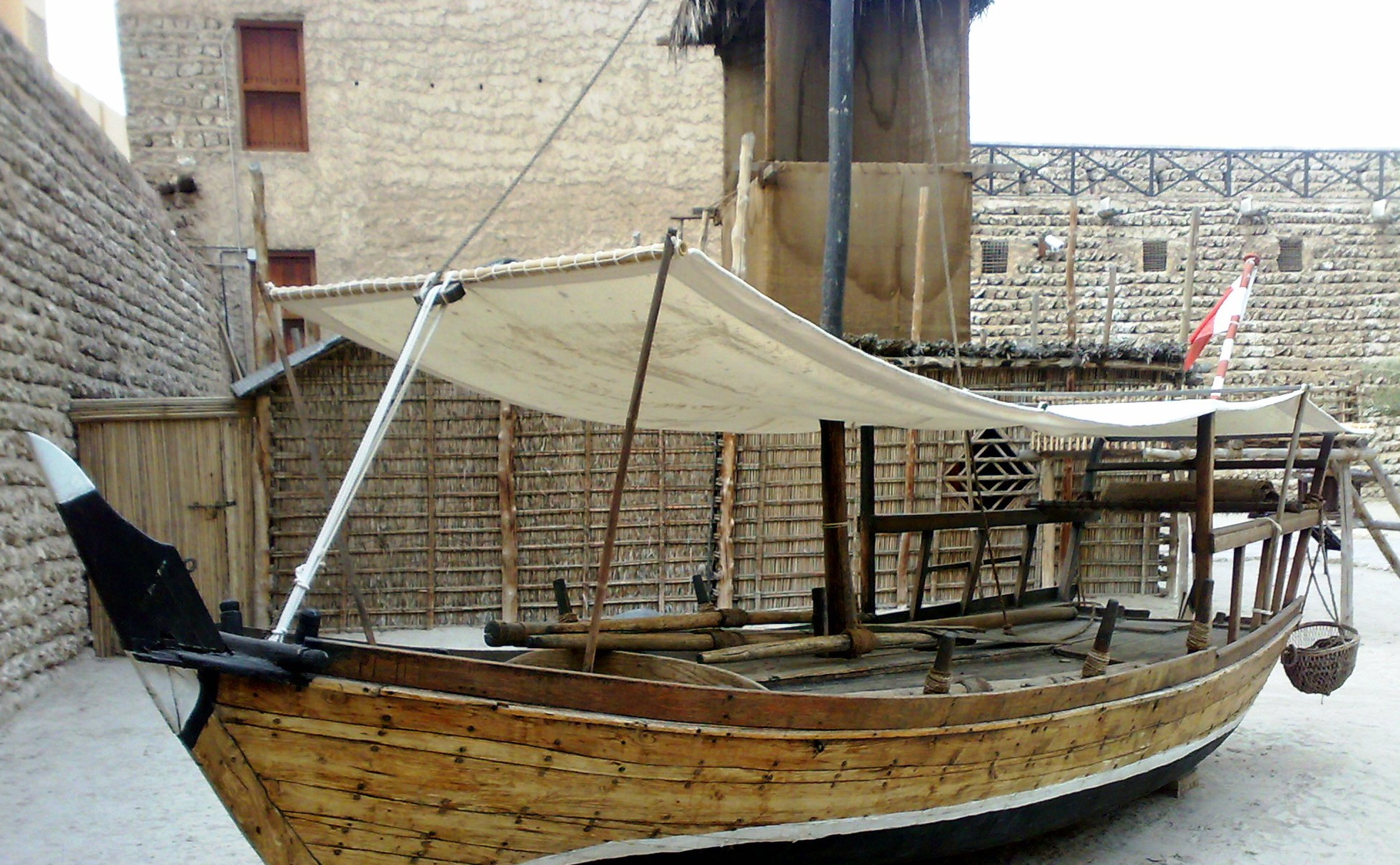"Azure waters, a refreshing breeze, and sunsets that look hand-painted make a fine journey for this old sailor. Now, if only we could reach our destination! Damn these lazy winds!"
- anonymous: an exasperated Takheti sailor, 4082 HE
The Sambehwal ("wide Sambeh") is the principle sailing vessel used for mercantile shipping across the Haifatneh Sea, and is also seen along the coastline to the north of
Andaen. While its design is primarily based on that of the ocean-going
Sambeh, which originated from coastal Takhet, it has a comparatively wide hull, considerably improving its storage capacity at the cost of seaworthiness in the rougher waters of the northern ocean.
Design
Typically around 25 meters in length and up to 10 meters in width, with a
freeboard of around 6 meters, the Sambehwal is normally crewed with 12 sailors plus a captain and a navigator. Since it has a single-deck design mainly outfitted for cargo, it only rarely transports passengers, mainly those who are willing to endure some discomfort for a cheap voyage on a shipping vessel that is already headed to their destination.
The spatiousness of the Sambehwal's deck accommodates a noteworthy feature of maritime engineering: The vessel features collapsible sails which can be repurposed as awnings providing shade for the crew. While usually the sails are deployed for their usual purpose, on seafaring journeys in which the winds prove unreliable, the crew can compensate for less-than-full sails by rowing galley-style with on-board oars; in this case, the sails-turned-awnings provide shade so that the rowing sailors can sit in the shade while allowing the sea's breezes to cool them off during their labor. Further, for hurried crews or those simply seeking to take advantage of favorable winds, both sails and oars can be deployed simultaneously, sacrificing some comfort for the rowers in exchange for a shorter trip itinerary. (It is also worth noting that, given the gentle winds of the Haifatneh Sea, the collapsible sails are not likely to have their structural integrity endangered by unanticipated weather changes.)
The Sambehwal rather stands out from the standard galleys that share the same waters, not only because of its Takheti name—oared galleys are a Haifatnehti invention—but because of its design being based on that of an ocean-faring vessel.
Origin
The predecessors of the Sambehwal were, quite simply, Sambeh that were modified in a pitch. As both maritime trade and cross-Haifatneh relations improved in the last centuries of the Grim Era, Takheti sailors increasingly made trips to Haifatnehti ports but found themselves considerably inconvenienced by the change in sailing environments from one side of the Strait of Andaen to the other. The conventional solution of unloading cargo from an ocean-faring ship and loading it onto a sea-adapted one was straightforward yet onerous, eating into Takheti crews' schedules and increasing labor expenses or Takheti merchants. The first attempts to sail Sambeh directly through the Strait into the Haifatneh Sea, however, varied from costly to downright disastrous: Amid the fickle winds and gentler waves of the Sea, poor timing or navigation could strand a Sambel vessel on the open sea for days or even weeks longer than expected. Outcomes varied from distress for crews to, in the worst cases, starvation and outright mutiny.
The initial solution to this problem was simply to load oars onto an existing Sambeh, but the vessel's higher freeboard combined with cargo capacity constraints made this inconvenient. The development of the Sambehwal, then, became a matter of a merchant choosing the large one-time expense of having a new vessel constructed over the frequent, petty expenses and headaches of re-loading their goods and re-boarding their crews every time they transitioned from ocean to sea.


Comments